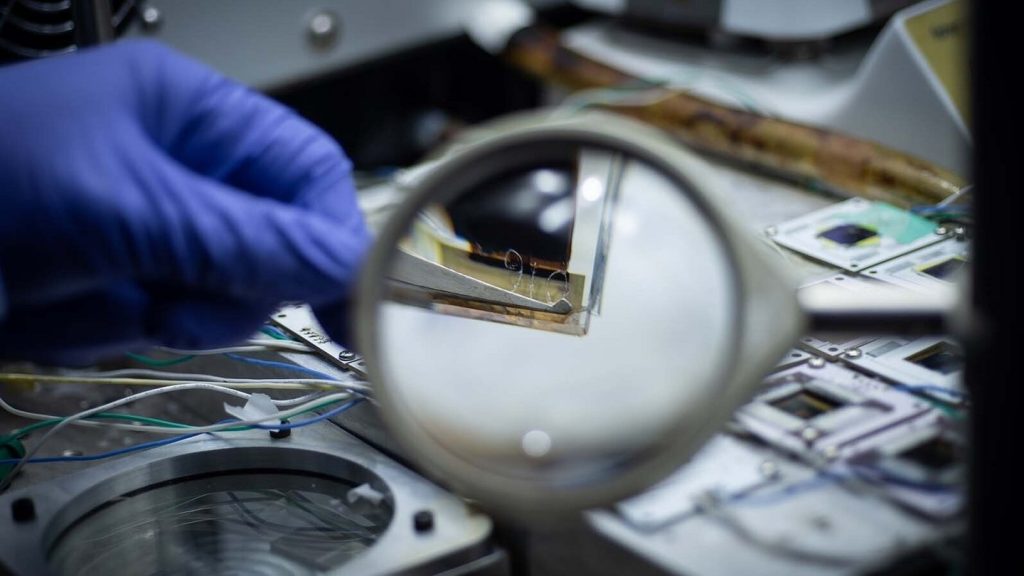Less expensive, more flexible and more efficient – these are the advantages offered by perovskite-based solar cells over the previously dominant semiconductor material, silicon. Even the high efficiency of the best laboratory cells of 25.7 percent is hardly inferior to that of silicon solar cells. The lack of perovskite durability alone has slowed serial production so far. But the researchers have now succeeded in dramatically increasing the longevity of their prototypes with an ultra-thin protective layer. As they report in the journal Science, perovskite solar cells can generate solar energy for more than five years at temperatures up to 35 degrees Celsius.
Until now, the perovskite layer that absorbs sunlight and the core layer that transmits electric charge carriers have been particularly sensitive. So, Yueh-Lin Loo of Princeton University and her team added a protective layer of the elements cesium, lead, and iodine, just a few atoms thick, between these two layers. The so-called 2D materials had a strong stabilizing effect on the surrounding layers, which are especially important for solar power generation. Initial observations already showed that the efficiency of the perovskite solar cell did not decline even after six months.
Lu and her colleagues then analyzed this surprising stability more precisely by developing a type of stress test for solar cells. “30-year durability is needed, but we can’t test our cells for 30 years,” Loo says. Therefore, the researchers not only exposed their solar cells to artificial sunlight for a long time, but also heated them to high temperatures. Up to 110 °C under these conditions, the aging process of solar cells can be greatly accelerated, and from the data collected, Lu and her team infer the actual service life under cooler, more realistic conditions.
The stress test showed that at temperatures of 110 degrees Celsius, the efficiency of the solar cells only decreased to about 80 percent of the original efficiency after more than 2,100 hours. On the other hand, at 35 °C, Lu and her colleagues noticed hardly any performance loss. More accurate calculations have shown that solar cells achieve an astonishingly long service life of more than five years at moderate temperatures. According to the researchers, with new physical variables and manufacturing processes, it is possible that perovskite solar cells will be able to generate solar energy very efficiently for 20 to 30 years. At the same time, the relatively low efficiency to date of the prototype can be increased by 17.4 percent. So there is a realistic chance that within a few years pure perovskite solar cells can be produced with an efficiency of more than 20 percent or perovskite-silicon tandem cells with an efficiency of up to 30 percent.

“Social media evangelist. Baconaholic. Devoted reader. Twitter scholar. Avid coffee trailblazer.”








More Stories
Longest jets in the universe discovered – giant particle streams as long as 140 Milky Way galaxies in a row
New method reveals 307 supernova remnants
Snapchat is upping the ante on augmented reality glasses